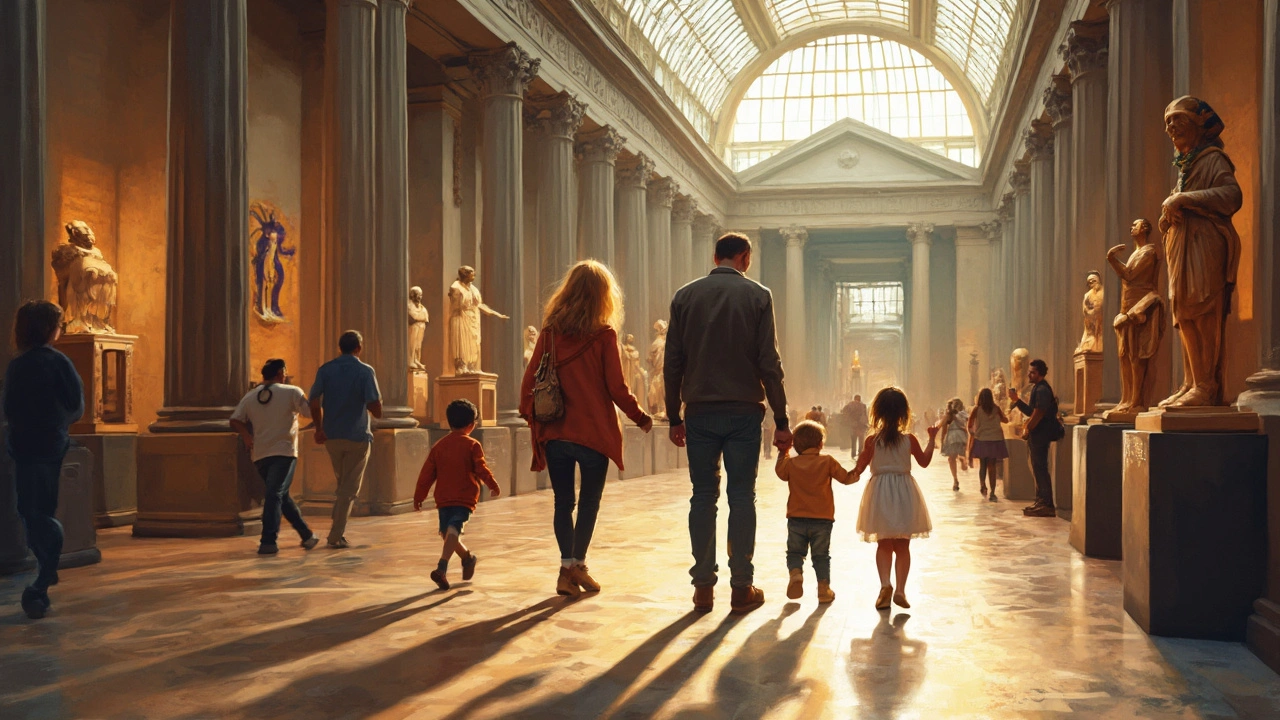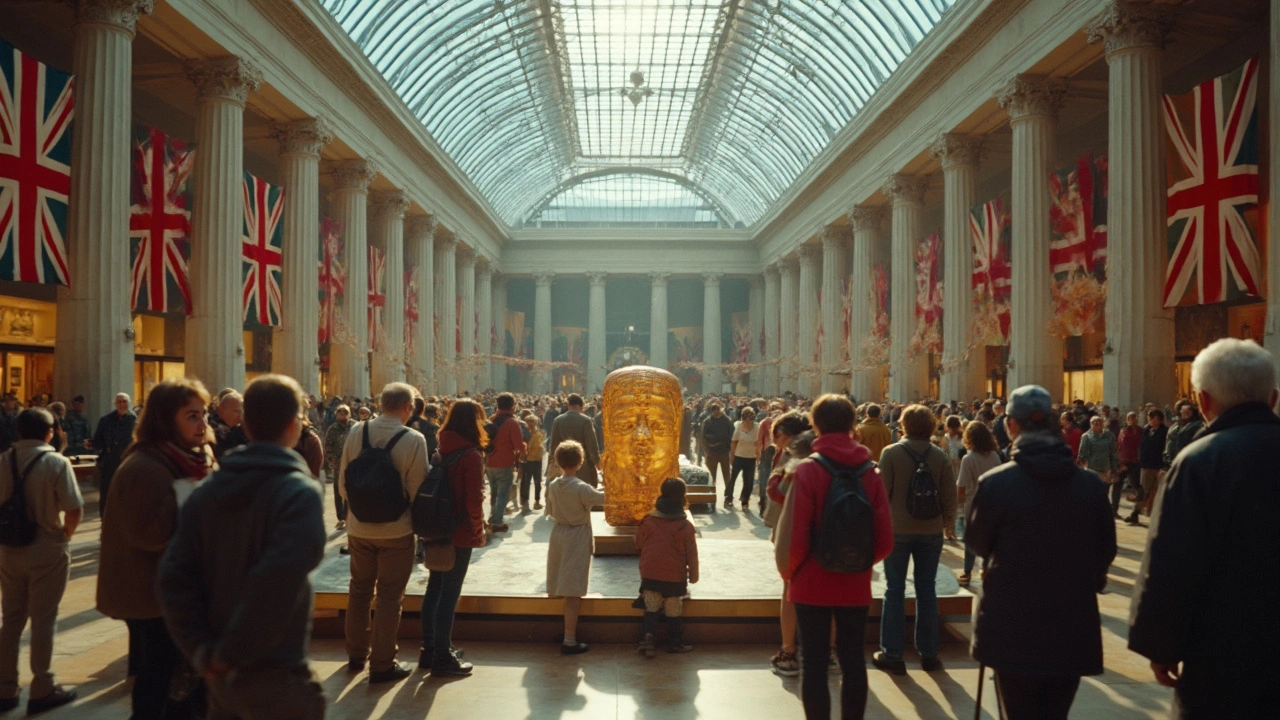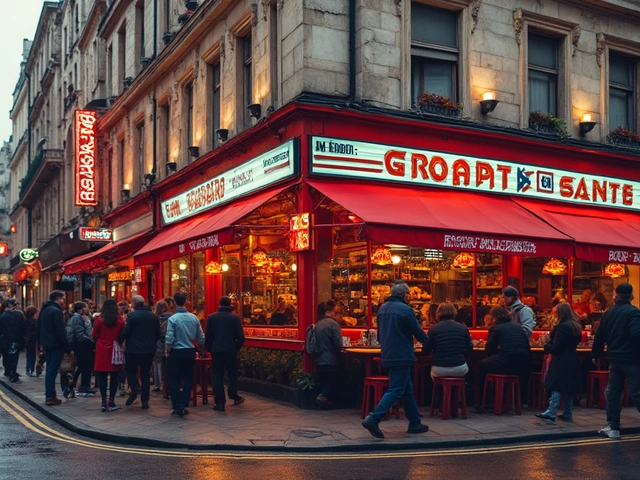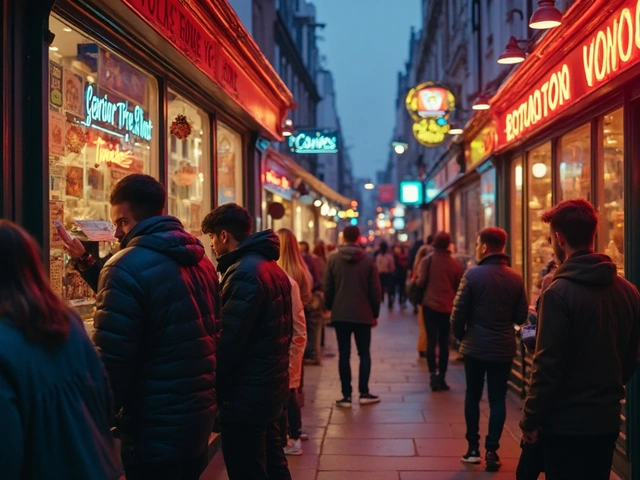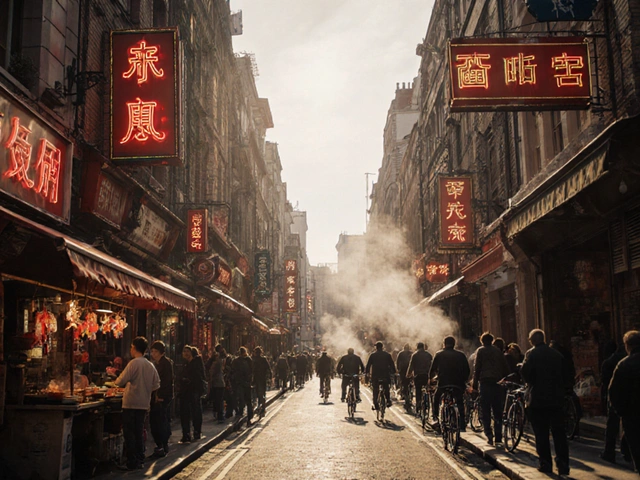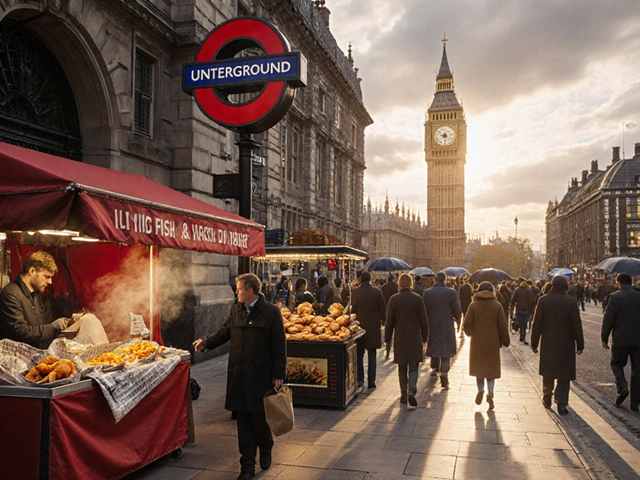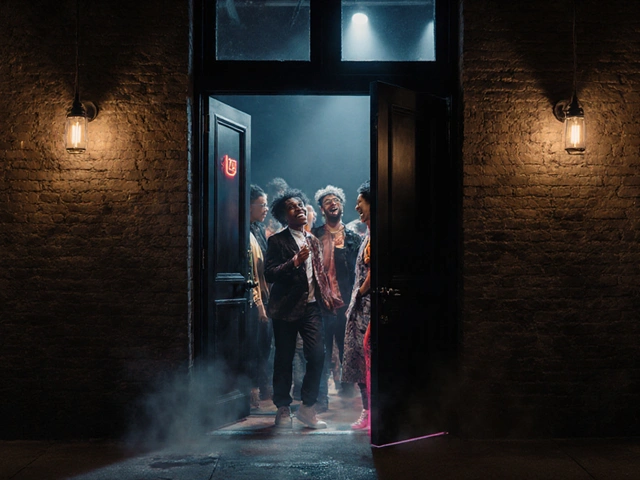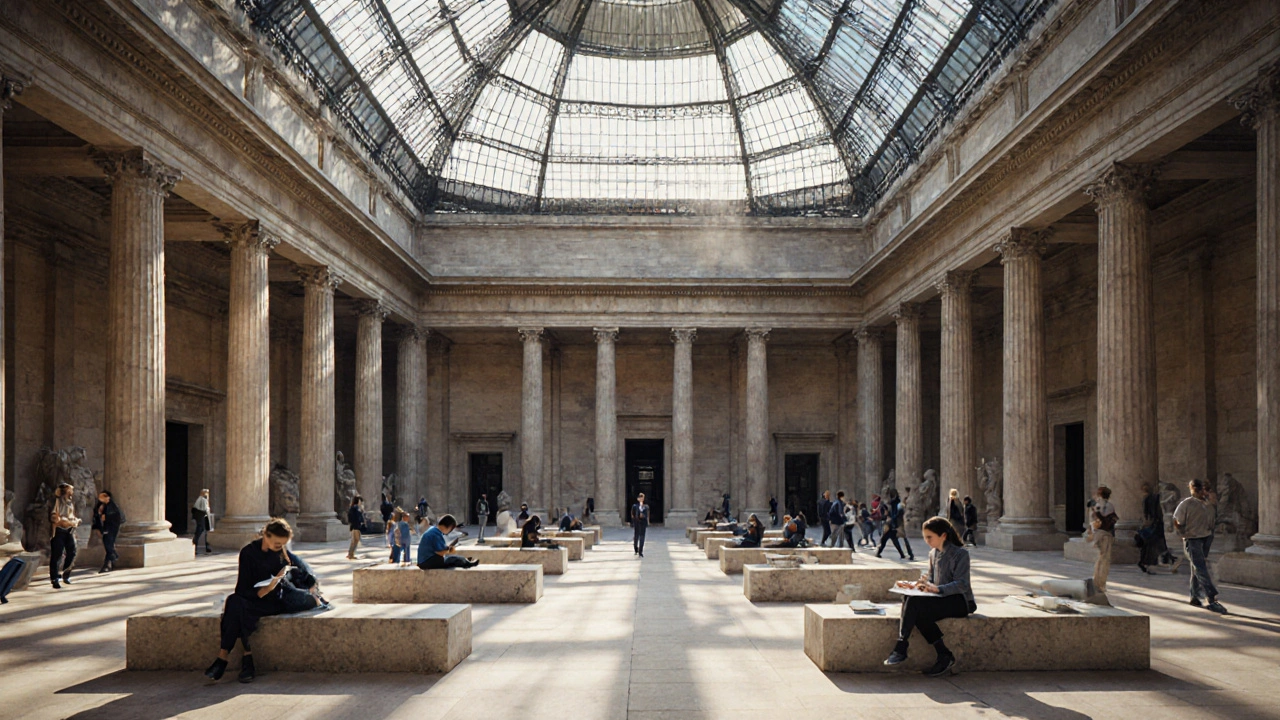
When you live in London, you’ve probably walked past the grand stone façade of the British Museum on Bloomsbury’s quiet streets a dozen times-maybe even rushed past it between a meeting in Holborn and a train at Euston. But have you ever actually gone inside? Not just to check it off a tourist list, but to truly wander through rooms that hold the echoes of ancient civilizations, right here in the heart of the city?
More Than Just a Tourist Spot
The British Museum isn’t just one of London’s most visited landmarks-it’s a living archive of human history, and it’s completely free. No ticket, no queue at the door, no hidden fees. That’s rare in a city where even the view from the Shard costs £35. Walk through the Great Court, under the glass roof designed by Norman Foster, and you’re standing where students from UCL come to study, where retirees sit on the stone benches reading, and where families spread out on the floor with sketchbooks, copying the Rosetta Stone.
It’s open every day except January 1 and Christmas Day. Opening hours? 10am to 5pm, with Friday nights until 8:30pm. That’s perfect if you’ve just finished work in the City and want to escape the rush without spending a penny. Grab a coffee from the on-site café-try the Earl Grey scone, it’s the one Londoners whisper about-and settle into a corner with the Parthenon sculptures. No one will rush you. No one will even notice you’re there.
The Real Stars of the Collection
You’ve seen the Egyptian mummies in documentaries. But seeing them in person? That’s different. The Rosetta Stone isn’t just a slab of black rock-it’s the key that unlocked 2,000 years of lost language. Stand in front of it, and you’re standing where scholars in the 1820s first cracked the code of hieroglyphs. It’s not just history. It’s the moment modern understanding began.
The Assyrian lion hunt reliefs? They’re carved in alabaster, over 2,600 years old, and still show the tension in the lions’ muscles as they’re pierced by arrows. You can see the chisel marks. You can imagine the artisans in Nineveh, sweating under the Mesopotamian sun, shaping stone that would outlive empires.
And then there’s the Elgin Marbles. They’re controversial. They’re debated in Parliament. But they’re also some of the most beautiful sculptures ever made-fragments of the Parthenon, brought to London in the early 1800s. Walk around them slowly. Notice how the drapery of the goddesses seems to move, even though they’re carved in stone. That’s the genius of 5th-century BCE Athens. And it’s all here, just a 10-minute walk from Russell Square tube.
How to Navigate Without Getting Lost
The museum has over 8 million objects. You can’t see them all. Don’t try. Pick one theme and go deep.
- For ancient history lovers: Start with the Egyptian Galleries (Rooms 61-66), then head to the Greek and Roman rooms (Rooms 17-23). Don’t miss Room 21-the Parthenon Gallery.
- For curious minds: The Enlightenment Gallery (Room 1) is where the museum began in 1759. It’s full of cabinets, maps, and curious objects from the 18th century-the kind of stuff that made people wonder how the world worked.
- For quick visits: Head straight to Room 4-the Sutton Hoo helmet. It’s the crown jewel of Anglo-Saxon England, found in a burial mound near Woodbridge, Suffolk. It’s the real-life version of what you see in Beowulf.
Free guided tours run every day at 11am and 2pm. They’re led by museum staff, not volunteers. They know the stories behind the artifacts-the real ones, not the tourist myths. And they’re quiet enough that you won’t feel like you’re in a school trip.
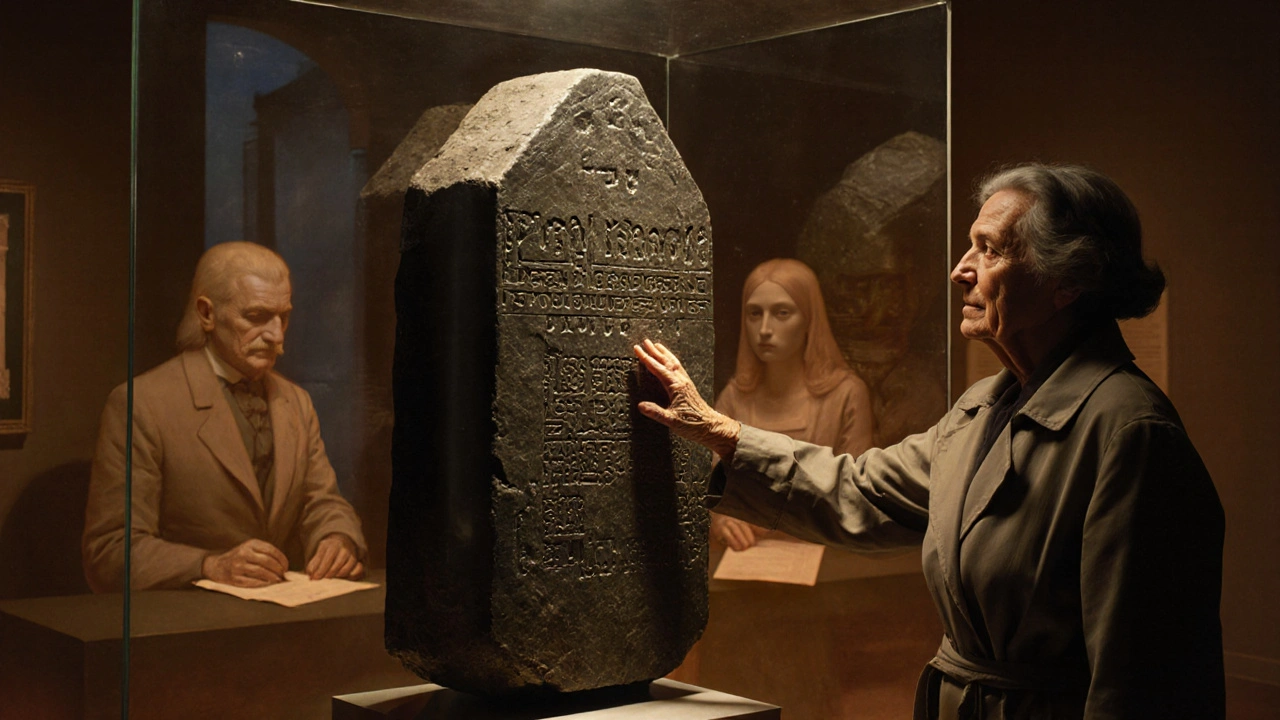
London’s Hidden Museum Rituals
If you’ve lived in London long enough, you know the rhythm of the city. And the British Museum has its own quiet traditions.
Every Wednesday evening, during the late opening, local artists bring sketchpads and charcoal. You’ll find them in the Egyptian galleries, drawing the same sarcophagus for hours. One woman, who works as a librarian in Camden, has been sketching the same bust of Cleopatra for seven years. She says it’s her therapy.
On rainy Sundays, the café fills with people who’ve come from all over the city-Croydon, Walthamstow, Lewisham-just to sit in silence with a cup of tea and a view of the Great Court. No one talks. No one rushes. It’s the closest thing London has to a public meditation space.
And if you’re an expat? You’ll find whole communities here. There’s a weekly Arabic language meetup in Room 13 (Near Eastern Antiquities). A Chinese calligraphy group meets in the Asian galleries every second Saturday. You’ll hear Mandarin, Punjabi, Polish, and Yoruba spoken in hushed tones as people connect over objects older than any nation.
What to Do After You Leave
Don’t just walk back to the tube. Take a detour.
Walk down Gower Street to the Foundling Museum-another free gem, tucked away behind a Georgian facade. It’s about child welfare in 18th-century London, and it’s hauntingly beautiful. Then, head to the nearby Coram’s Fields, a park where kids play freely under the watch of volunteers. It’s the same land where the first children’s asylum stood. History doesn’t end at the museum doors.
For lunch, try the British Museum’s own café, but if you want something more local, cross the road to La Fromagerie on Bloomsbury Street. Their cheese platter with a crusty sourdough loaf is the best £12 you’ll spend in central London. Or grab a pie from The Pie Room in Soho-flaky, warm, and filled with braised beef and red wine. It’s the kind of comfort food that makes you feel like you belong.
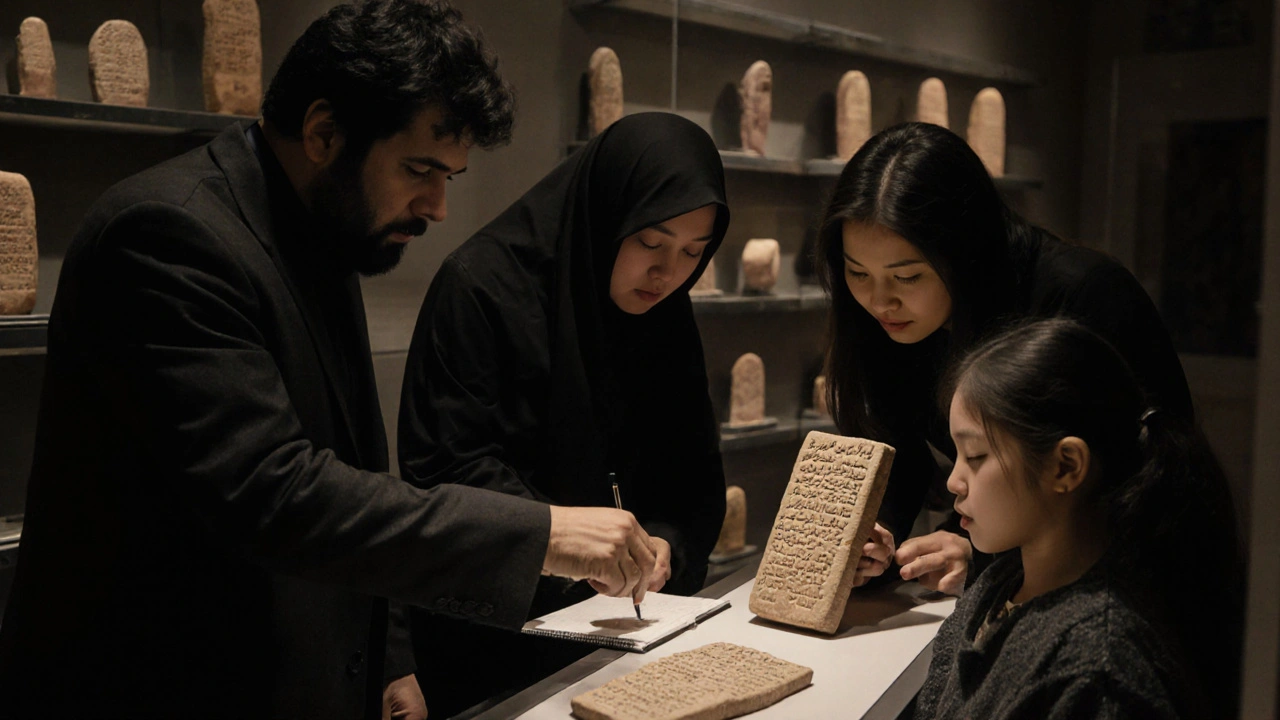
Why This Matters to Londoners
In a city that’s always moving-where the Tube is crowded, the rent is high, and the news feels heavy-the British Museum is a pause button. It doesn’t ask you to pay. It doesn’t ask you to be a tourist. It just opens its doors and says: here. Look. Think.
It’s where a schoolkid from Peckham can stare at a 3,000-year-old Babylonian tablet and realize: someone else, somewhere else, once worried about the same things-justice, love, loss, legacy.
That’s why, in a city of 9 million people, this one place feels like it belongs to everyone. And no one owns it. That’s the quiet magic of it.
Practical Tips for Londoners
- Travel: Nearest tube: Tottenham Court Road (Central and Northern lines), Holborn (Central and Piccadilly), or Russell Square (Piccadilly). All are under 10 minutes’ walk.
- Free entry: Always free. No booking needed for general admission. Only book ahead if you’re visiting a special exhibition (they charge for those).
- Best time to go: Weekday mornings before 11am or Friday evenings after 6pm. Weekends get crowded, especially with school groups.
- Bag policy: Large bags must be checked at the cloakroom. Lockers are free. Bring a small backpack if you’re planning to explore.
- Bring: A notebook. A water bottle (there are free water refill stations). And patience. This isn’t a theme park. It’s a cathedral of human thought.
Is the British Museum really free for everyone in London?
Yes. Entry to the permanent collection is completely free for all visitors, whether you’re a London resident, a tourist, or just passing through. There’s no need to book in advance for general admission. Only special exhibitions, like the recent Pompeii or Vikings shows, require tickets-and those are clearly marked on the website.
How long should I spend at the British Museum?
You could spend a whole day here and still miss things. But if you’re short on time, 90 minutes is enough to see the highlights: the Rosetta Stone, the Parthenon sculptures, the Egyptian mummies, and the Sutton Hoo helmet. If you’re a local and have time, aim for two visits. One for the big names, another to explore the quieter corners-like the Islamic galleries or the Oceanic collections.
Are there any hidden exhibits most tourists miss?
Absolutely. Room 68 (Ancient Egypt: Death and the Afterlife) has a collection of tiny wooden shabti figures-servants meant to work for you in the afterlife. They’re easy to overlook, but each one is unique. Room 24 (Europe and the Middle East) holds the Lewis Chessmen-12th-century chess pieces carved from walrus ivory, found in Scotland. They’re the reason you see them in Harry Potter. And Room 53 (Africa) has a stunning 19th-century Benin bronze plaque that tells a story of power and ritual few visitors notice.
Can I bring my kids? Is it kid-friendly?
Yes, and they’ll love it. The museum has free family trails-pick one up at the information desk. The ‘Mummy Mystery’ trail for ages 6-12 is especially popular. There’s also a hands-on Discovery Room near the main entrance, where kids can touch replicas of ancient tools and try writing on clay tablets. And the Great Court has plenty of space to run around without disturbing anyone.
What’s the best way to avoid crowds?
Go on a weekday, preferably Tuesday or Wednesday. Arrive just after opening at 10am, or come during the Friday late opening (6-8:30pm). Avoid weekends, school holidays, and the first weekend of every month when free events draw big crowds. The Egyptian galleries are always busy, so head to the Asian or Oceanic collections first-they’re quieter and just as fascinating.
Comments (8)
- Steven Williams
- November 2, 2025 AT 08:55 AM
The British Museum is one of those places that redefines what 'free' means. Not just no ticket - but no pressure, no rush, no sales pitch. Just you and 5,000 years of human thought. I’ve spent entire lunch breaks just staring at the Sutton Hoo helmet. No one ever asks what you’re doing. They just let you be. That’s rare.
- Danny Burkhart
- November 3, 2025 AT 04:26 AM
OMG YES. The Elgin Marbles? I cried. Not because I’m emotional - but because the way the marble catches the light? It’s like the sculptor just stepped away for coffee and left the goddamn drapery mid-flow. How is that even possible?!? I stood there for 20 minutes just watching shadows move across the folds. Someone please tell me I’m not the only one who does this???
- Taranveer Dhiman
- November 3, 2025 AT 18:57 PM
As someone who grew up in Delhi surrounded by colonial relics that were never returned... I have mixed feelings. 🤔 But honestly? Walking through the Great Court feels like stepping into a cathedral built by humanity itself - not empires. The Rosetta Stone? It’s not British. It’s not Egyptian. It’s *ours*. And that’s why I keep coming back. 🕊️
- Swapnil Dicholkar
- November 5, 2025 AT 17:46 PM
I come here every Sunday with my little brother. He’s 9 and obsessed with Egyptian mummies. Last week, he drew a whole comic strip of a pharaoh using a smartphone. I didn’t correct him. Let him believe the ancients had Wi-Fi. Sometimes, magic doesn’t need to be accurate - just real. And this place? It makes magic feel possible.
- Nitz Shofner
- November 7, 2025 AT 15:15 PM
You people are overthinking this. It’s a museum. Free? Great. But don’t romanticize it. The Rosetta Stone was stolen. The Parthenon marbles were looted. The Benin bronzes? Pillaged. You’re just a tourist with a coffee and a guilt complex. Stop pretending this is spiritual - it’s a warehouse with good lighting.
- Naomi Dietrich
- November 7, 2025 AT 16:03 PM
OMG I CAN’T BELIEVE YOU JUST SAID THAT. You think it’s just a warehouse?!? Have you even TOUCHED the Lewis Chessmen?!? They’re not artifacts - they’re TIME TRAVEL. You can feel the fear in the king’s face. The knight’s mane is carved like it’s BLOWING IN THE WIND. And you call it a WAREHOUSE?!? I’m literally shaking right now. Someone call a therapist. Or better yet - go back to your basement and play Call of Duty.
- brandon garcia
- November 8, 2025 AT 09:08 AM
Naomi, you just gave me chills. 🔥 That’s exactly it - these things aren’t objects. They’re whispers from people who lived, loved, feared, and carved their truth into stone before we were even a thought. I brought my niece here last month. She sat in front of the Assyrian lions for 45 minutes. Didn’t move. Didn’t speak. Just… breathed. That’s not tourism. That’s transformation. This museum doesn’t just hold history - it resurrects it.
- Mike Gray
- November 8, 2025 AT 21:54 PM
Just go. Seriously. No excuses. Even if you think you’re not a ‘museum person.’ Walk in. Find the nearest bench. Look up. The glass roof lets in the sky. The stone floors hold centuries. You don’t need to know anything. Just be there. You’ll feel it. I promise.

